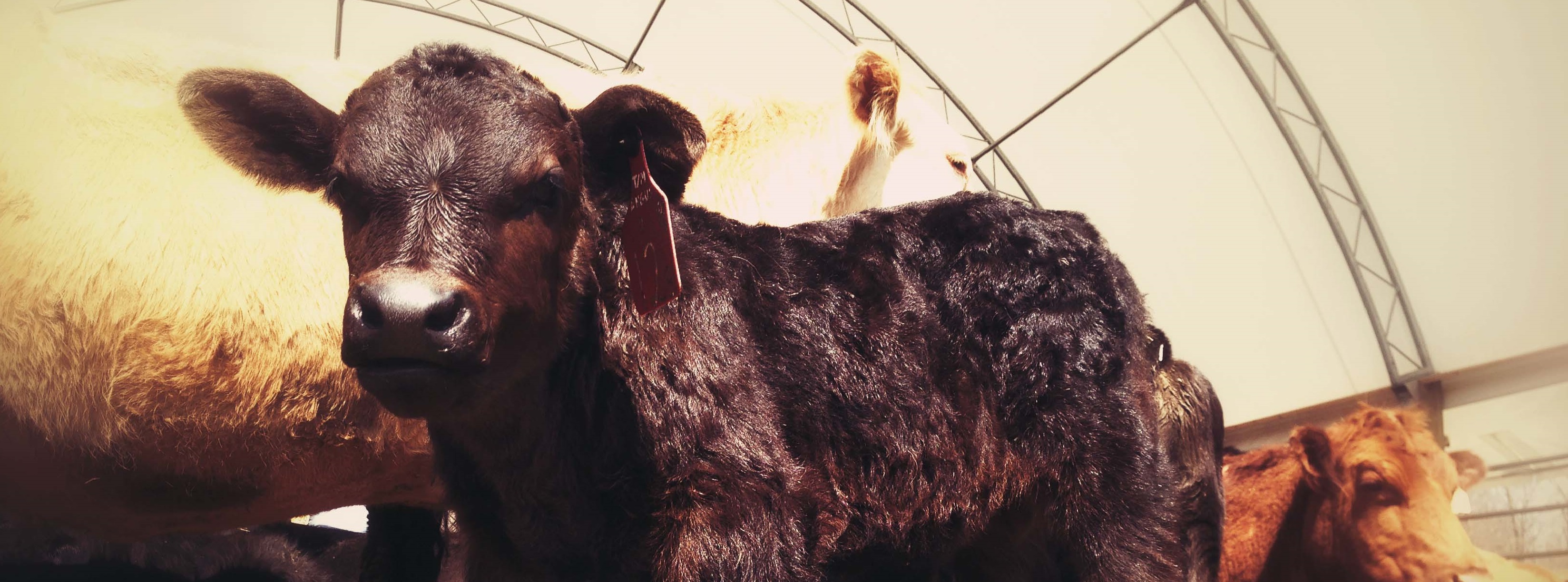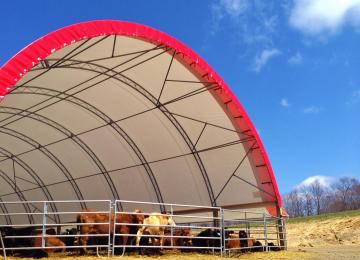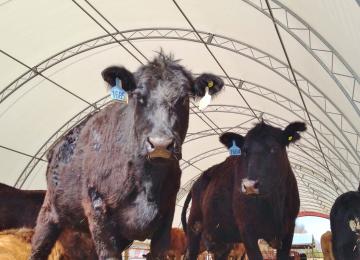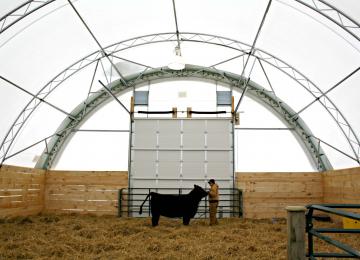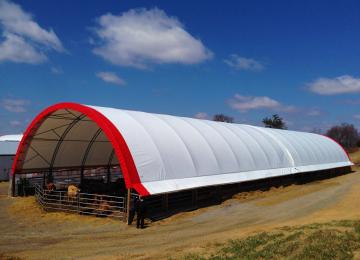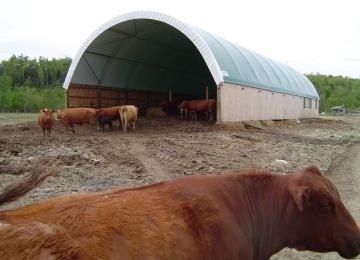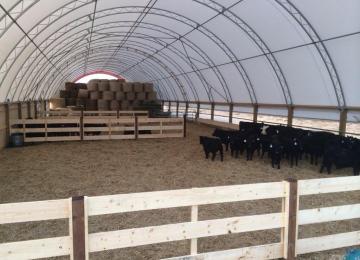Project Details
Fabric Buildings for Beef Housing
There are many benefits of a fabric covered building in any industry, but one industry in particular has seen a recent trend in the use of these structures. The beef industry across North America has been leaning in favor of fabric covered structures. As a healthy alternative to traditional wood and steel buildings, they are installed quickly and are a cost effective option. There have been studies done pointing to the various advantages of the buildings, one study in particular done by the University of Iowa concludes that open feedlot steers have higher mud scores than those in a fabric shelter. The article also states, “An alternative to open feedlots where runoff and manure management are a growing concern, hoop barns are considered a more environmentally friendly option to traditional feedlot arrangements.” (Iowa State University, Mark Honeyman et al.)
Ontario’s OMAFRA website devotes a page to the benefits of fabric covered buildings for livestock – especially beef. They state, “Fabric-covered buildings can provide a low cost alternative for livestock that can be housed in a cold environment, provided the producer knows the limitations and how to work with them. Properly designed, they provide a bright airy well ventilated environment that can be a pleasure to work in.” http://www.omafra.gov.on.ca/english/livestock/beef/news/info_vbn1013a1.htm
Mike Jarvis of Rice Lake Angus recently chose a Tasco Dome to house his beef cattle. Mike’s son Tyler showed Hawthorne Patricia's Pride at the Royal Winter Fair 2013 and placed 2nd in her heat. The younger Curraghdale Patricia (pictured above with Tyler and to the left) is Tyler's 4H project for this year. The air quality and bright light inside a fabric building made Tasco Dome a great choice for him and his cattle. “There were many reasons why we went with Tasco Dome. For the health and cleanliness of the animals, it’s cost effective - less expensive than a pole barn, you also do not get a warranty on a pole barn, and the upkeep and maintenance is inexpensive.”


